
Jules Gabriel Verne was a French novelist, poet, and playwright. His collaboration with the publisher Pierre-Jules Hetzel led to the creation of the Voyages extraordinaires, a series of bestselling adventure novels including Journey to the Center of the Earth (1864), Twenty Thousand Leagues Under the Seas (1870), and Around the World in Eighty Days (1872). His novels, always well documented, are generally set in the second half of the 19th century, taking into account the technological advances of the time.
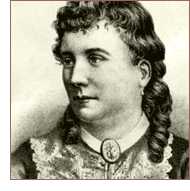
Mary Elizabeth Braddon was an English popular novelist of the Victorian era. She is best known for her 1862 sensation novel Lady Audley's Secret, which has also been dramatised and filmed several times.

The Count of Monte Cristo is an adventure novel written by French author Alexandre Dumas (père) completed in 1844. It is one of the author's most popular works, along with The Three Musketeers. Like many of his novels, it was expanded from plot outlines suggested by his collaborating ghostwriter Auguste Maquet.
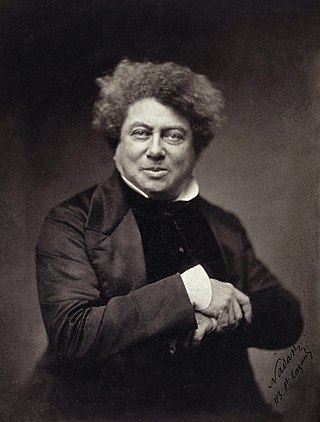
Alexandre Dumas, 24 July 1802 – 5 December 1870), also known as Alexandre Dumas père, was a French novelist and playwright.
This article contains information about the literary events and publications of 1836.
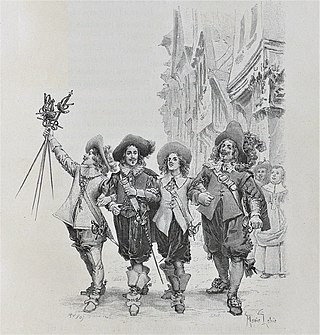
The Three Musketeers is a French historical adventure novel written in 1844 by French author Alexandre Dumas. As with some of his other works, he wrote it in collaboration with ghostwriter Auguste Maquet. It is in the swashbuckler genre, which has heroic, chivalrous swordsmen who fight for justice.
The d'Artagnan Romances are a set of three novels by Alexandre Dumas (1802–1870), telling the story of the 17th-century musketeer d'Artagnan.

Jean Charles Emmanuel Nodier was a French author and librarian who introduced a younger generation of Romanticists to the conte fantastique, gothic literature, and vampire tales. His dream related writings influenced the later works of Gérard de Nerval.

The Queen's Necklace is a novel by Alexandre Dumas that was published in 1849 and 1850. It is loosely based on the Affair of the Diamond Necklace, an episode involving fraud and royal scandal that made headlines at the court of Louis XVI in the 1780s.
The Knight of Sainte-Hermine is an unfinished historical novel by Alexandre Dumas, believed to be Dumas' last major work. The novel was lost until the late twentieth century. Dumas scholar Claude Schopp found an almost-complete copy in the form of a newspaper serial. A number of Dumas' previously forgotten works have been found, but this novel is the largest and most complete at 900 pages.

La Comédie humaine is Honoré de Balzac's 1829–48 multi-volume collection of interlinked novels and stories depicting French society in the period of the Restoration (1815–30) and the July Monarchy (1830–48).

Lady of the Bedchamber is the title of a lady-in-waiting holding the official position of personal attendant on a British queen regnant or queen consort. The position is traditionally held by the wife of a peer. A lady of the bedchamber would give instructions to the women of the bedchamber on what their queen wished them to do, or may carry out those duties herself.

George William MacArthur Reynolds was a British fiction writer and journalist.
La Presse was the first penny press newspaper in France.

William Edward Vickers (1889–1965) was an English mystery writer better known under his pen name Roy Vickers, but used also the pseudonyms Roy C. Vickers, David Durham, Sefton Kyle, and John Spencer. He is the author of over 60 crime novels and 80 short stories. Vickers is now remembered mostly for his attribution to Scotland Yard of a Department of Dead Ends, specialized in solving old, sometimes long-forgotten cases, mostly by chance encounters of odd bits of strange and apparently disconnected evidence.

In literature, a serial is a printing or publishing format by which a single larger work, often a work of narrative fiction, is published in smaller, sequential instalments. The instalments are also known as numbers, parts, fascicules or fascicles, and may be released either as separate publications or within sequential issues of a periodical publication, such as a magazine or newspaper.
Catherine Grandison, Countess of Salisbury was an English noblewoman, remembered for her relationship with King Edward III of England and possibly the woman in whose honour the Order of the Garter was originated. She was the daughter of William de Grandison, 1st Baron Grandison, and Sibylla de Tregoz. Her mother was one of two daughters of John de Tregoz, Baron Tregoz, maternal granddaughter of Fulk IV, Baron FitzWarin). Catherine married William Montacute, 1st Earl of Salisbury in about 1320.
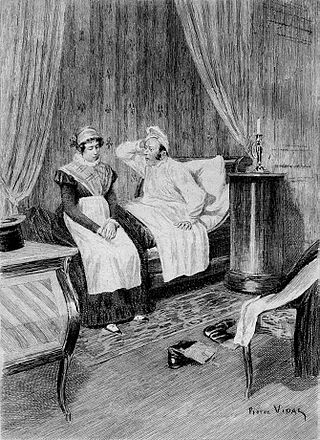
La Vieille Fille is a novel by the French writer Honoré de Balzac. Written in 1836, it was first published as a serial in La Presse, then published by Edmond Werdet in 1837 in Études de mœurs, in the section les Scènes de la vie de province. La Vieille Fille was republished in 1839 by éditions Charpentier, before being published alongside le Cabinet des Antiques in the isolated les Rivalités group within Scènes de la vie de province in la Comédie humaine, published in 1844 by édition Furne.
La Sanfelice is an 1864 novel by the French writer Alexandre Dumas. It depicts the arrest and execution in Naples of Luisa Sanfelice, who was accused of conspiring with the French and their supporters against Ferdinand I of the Two Sicilies during the French Revolutionary War. Lord Nelson and Lady Hamilton, who were in Naples at the time, also feature as characters.
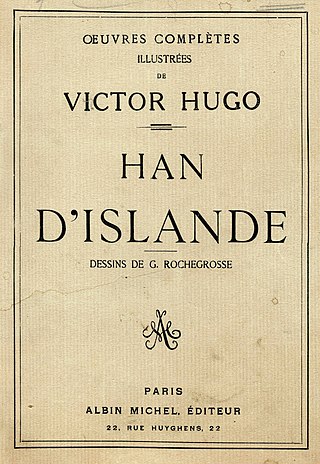
Hans of Iceland is an 1823 Gothic historical novel by the French writer Victor Hugo. It was revised from a shorter work that he had first been published in the literary magazine Le Conservateur littéraire in 1820. It appeared in its first English translation in 1825.














